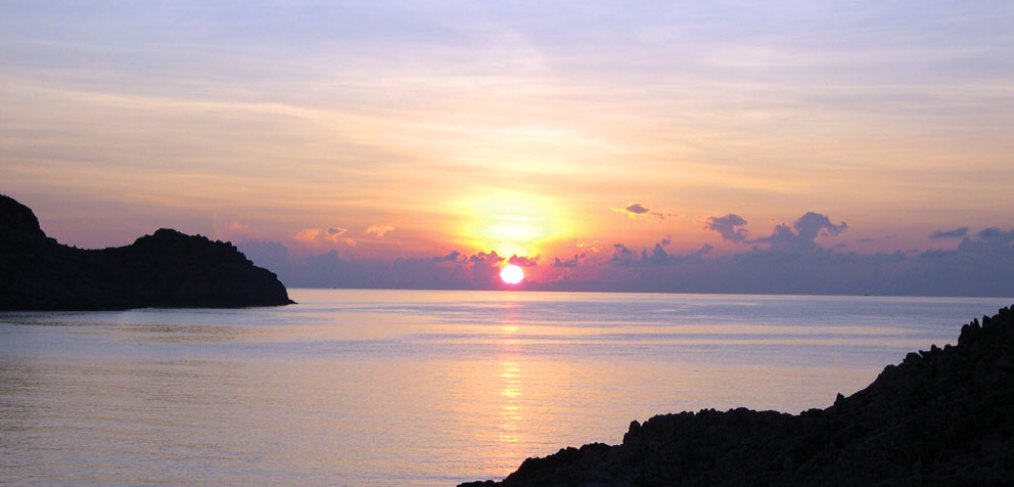
Con Dao: Vietnam’s Best Kept Secret
For some time now Phu Quoc has developed a reputation as the island of choice for those looking to escape from Ho Chi Minh City. However, as Mark Bibby Jackson discovers, the less contentiously Vietnamese island of Con Dao has a lot more to offer intrepid travellers from Cambodia. Additional material from AsiaLIFE HCMC.
Until comparatively recently gaining access to Con Son, the main island in the tiny archipelago of Con Dao, was arduous. A long ferry journey from Vung Tau or an expensive helicopter ride on an ex-military helicopter were the only options. Now the trip is a short, hassle-free flight from Ho Chi Minh City. This isolation has helped to preserve a rural atmosphere far-removed from the hustle and bustle to be found in southern Vietnam’s biggest city.
Here you can sit on the side of the road eating a bowl of congee and play spot the car – apparently there is only one petrol station on the island. Locals come up to you and say “hello” and keep on walking without trying to sell you anything. This is Vietnam before the advent of mass tourism.
Not that the string of 14 islands off Vietnam’s southeastern coast has always been a fantasy island. Originally settled by the British East India Company in 1703, within a few years all the British commanders were killed by Sulawesi mercenaries who had been recruited to defend the fort.
For a long time Con Son was the country’s Robben Island. Used successively by the French, South Vietnamese and Americans as a penal colony to incarcerate and torture political opponents, the dilapidated remains of the prisons, including the main Phu Hai Prison, built by the French in 1862, serve as a stark reminder of the brutality of the times. Close to the Revolutionary Museum, the prison has several detention centres with all too lifelike mannequins. The infamous Tiger Cages, built by the French in the 1940s, confined prisoners like tigers in the sun as wardens walked above them on grilles.
Many of those killed in the prisons were buried at Hang Duong Cemetery, including Vo Thi Sau, Vietnam’s most famous war heroine, who was executed on the island in 1952, at the age of 19. Her cemetery has become a shrine particularly for young Vietnamese women. There is also a striking statue of Vietnam’s Joan of Arc, a good example of Communist art.
While Vo Thi Sau’s grave has a clear headstone, many of the 20,000 graves for those who died here between the 1940s and 1970s lie unmarked. Several prisons and other dilapidated buildings lie scattered around the island, making it an interesting place to hire a bike. Ma Thien Tanh Bridge serves as a testament to the French occupation. Allegedly 356 people died during its construction, which started in 1930, until it was suspended in 1945. As you look at the collapsed bridge on a deserted hillside, you can only wonder as to what it was all about.
Fortunately Con Dao’s future looks much more promising than its past. The islands are becoming a leading light in the country’s eco-tourism industry. Several of their beaches are the breeding grounds for the endangered Green Turtle. Each year from April to November, turtles return to the beaches where they were born to hatch their own offspring. Some 50,000 hatchlings make their way into the sea. The Con Dao National Park Authority arranges tours to the breeding grounds on Bay Canh Island with overnight stays. The best time to see the turtles is in June and July, according to Huynh Van Hung Hong of the Park Authority.
The marine park also has a rich marine life, with 1,300 species so far identified, including 342 species of hard coral. However, what makes the waters stand out is the clarity.
“At its best, water temperature wavers at 32 degrees with unlimited visibility,” says Jeremy Stein of Rainbow Divers. Jeremy opened Vietnam’s first PADI dive centre in the 90s, so he should know more about the country’s waters than most. Off the archipelago’s outer islands are 50-metre plus wall dives. If you are lucky you might even spot some endangered dugongs in the shallow waters around the harbour, especially in December and January. Hon Cau provides the best diving in the archipelago, including “some of the biggest table corals I’ve ever seen,” according to Jeremy. Although, if you want to combine a dive with some turtle watching it’s best to head for Bay Canh. “May through August is the best time to go,” he adds.
The archipelago’s eco-attractions are not just limited to the sea. The National Park includes some 5,998ha of forest in addition to the 14,000ha of the marine park. A steep 1.5km hike takes you to the old fruit plantation at So Ray. Originally built by the French, with forced labour, like the rest of the island’s buildings it has fallen into disrepair. Most of the trees were wiped out by Hurricane Lynda in 1997, but the park authority has planted some new trees, which attract two animals endemic to the island – the Con Dao Monkey and the Black Squirrel. There are great views across the bay from the watchtower, where you can also arrange to stay the night with the park authorities, albeit in basic conditions.
Although the local master plan for tourism predicted two million tourists per year, this was extremely ambitious. This really is a blessing. You can find other islands with turtle-hatching beaches, great dive sites and hikes in unspoilt forest, but these have largely become well-established tourist sites. Con Dao’s real charm is that it has not. Savour those “hellos” while they last. The arrival of the island’s first exclusive resort – the Six Senses Hideaway currently under construction – could herald the dawn of a new era for this hidden gem of an island.

